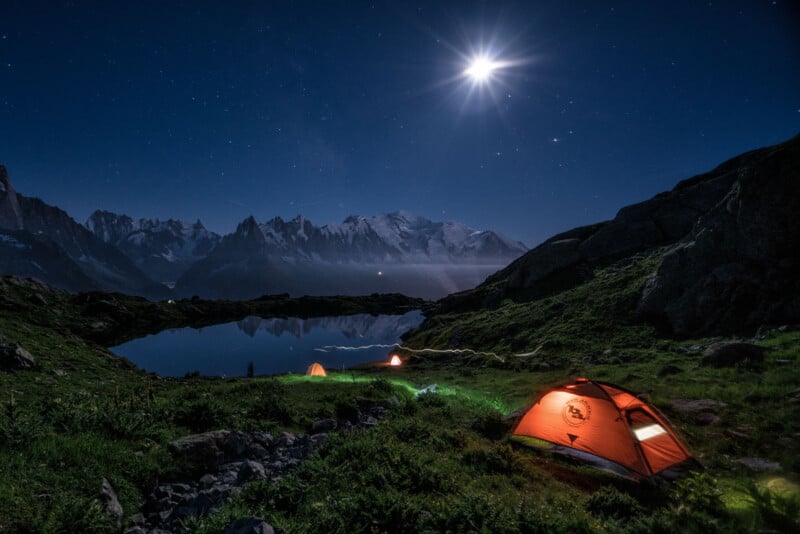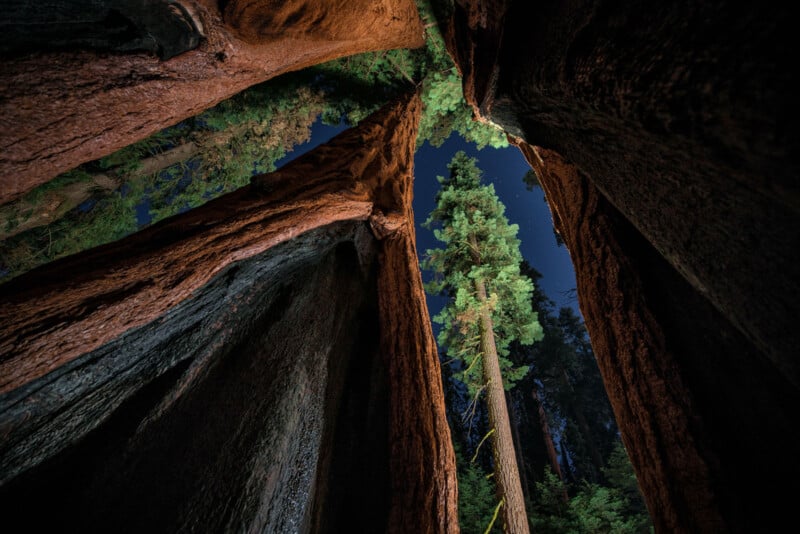Night Photography Tips From Nat Geo Photographer Keith Ladzinski

As part of its 2023 in Review series, National Geographic has not only revealed its “Pictures of the Year,” the iconic publication has also worked with its photographers to deliver a series of how-to articles designed to help amateur shutterbugs up their game heading into 2024.
Alongside educational articles on portraits, wildlife, and underwater photography, written by Celeste Sloman, Jasper Doest, and Jennifer Hayes, respectively, famed Nat Geo photographer Keith Ladzinski wrote about “How to take great photos at night.”
Scouting and Preparation are Key for Night Photography
PetaPixel chatted with Ladzinski over Zoom about his career and ways photographers can improve their night photography.
“When you’re working at night, it’s best to go on with the game plan,” Ladzinski starts. “I always like to try to find my compositions in advance.”
That isn’t to say that there aren’t “moments of serendipity,” but working at night is so challenging that Ladzinski cannot emphasize the importance of planning and scouting enough.
“I always like to scout during the daytime, and find out what the voice of the image is in advance because it’s harder to work in the dark.”
Everything is more difficult at night. Movement is more challenging, and Ladzinski notes that test shots take a lot longer, too, especially if someone is using a camera’s in-camera noise reduction processes.
Apps Help Photographers Keep an Eye on Stars, Planets, and the Moon
Alongside in-the-field scouting, Ladzinski relies heavily on apps like PhotoPills to help him plan his nighttime shoots. With PhotoPills, the Nat Geo photographer can see what the night sky will look like at a specific time anywhere in the world, which helps him compose shots and work around the Moon, which can help or hurt a photo depending on its phase.
At Night, the Sky Reigns Supreme
For Ladzinski, his night shots often play a narrative role in an overarching story. “There’s something very timeless about looking into the night sky. The world takes on a completely different look, especially through still imagery.” He seeks out the atmosphere and magic that the night sky provides.
To that end, night photography comprises a different compositional approach. If Ladzinski is going to go through the trouble of working at night, it is to capture what makes night special, which is often the star-filled night sky.
“When I’m incorporating the sky into the shot, I do want to really feel it. It’s not as impactful if it’s only the top third of the image, for instance. So oftentimes, I’m including a lot more of it… The compositions just naturally are a little bit different, and you want to utilize more of that negative space because it will be filled with something nice,” the photographer explains.
Artificial Light is Helpful and Color Corrective Gels are Essential
His use of artificial light is evident in many of Ladzinski’s night photos, including recent shots of giant Sequoia trees in California. Ladzinski travels with a pack of color-correction gel filters to ensure that color balance is good when working with artificial light at night.
“And if I’m bringing in light, then I’m using CT gels, I’m using orange gel on whatever my light source is to sort of bring in white light there,” says Ladzinski. “I have a bunch of them. They’re dusty and scratchy; they live in my photo bags because you never know when you’re going to need them.”

Photograph By Keith Ladzinski
Other Helpful Gear
While one of his favorite lights is a spotlight made by Larson Electronics, he has used cheap lights from auto parts stores, hardware stores, and even gas stations on various shoots. “Light is light,” Ladzinski says, adding that even cheap lights can work very well when used cleverly and properly balanced.
As for photographic gear, night sky photography is reasonably accessible and doesn’t require too much super-expensive equipment. “Whether you’re shooting on a smartphone or high-end SLR, make sure you have a sturdy tripod, a headlamp (or any other lighting), and warmer clothing than needed in the day (especially in the desert). I also recommend a cable release wire to trigger the shutter remotely, so you don’t need to handle your camera especially during long exposures. Also, bring a lens warmer to prevent fog,” Ladzinski writes on National Geographic.
Photographers Should Get to Know Their Gear
Speaking with PetaPixel about his career, Ladzinski explains that a critical component of his success has been his thorough understanding of his camera equipment. This is true no matter what you’re shooting. “Understanding your equipment and its capabilities” is vital.
An understanding of hardware goes alongside a firm grasp of software. “After a shoot, the best photographers will tweak white balance, lift shadows, bring highlights down, etc. But be careful not to overwork it,” writes Ladzinski.
While he is held to strict photojournalistic standards for his work with National Geographic, he stresses the importance of creativity in photography. However, as tempting as it may be to make dramatic tweaks to photos, excessive editing can often lead to bad results.
Getting it right in the camera is always essential, but perhaps even more critical during night photography because significant adjustments to photos captured at high ISO settings will push even the best cameras to their absolute limits. Unfortunately, night sky conditions vary so much, and everyone has different equipment, so Ladzinski cannot offer a foolproof cohort of camera settings that photographers should always use.
Night sky photography often demands photographers to move toward manual settings. Cameras can’t meter exposure very well at night, and they also cannot meter white balance effectively in the dark. Getting comfortable with a camera’s manual exposure settings, like shutter speed, aperture, and ISO, is vital to get the best night sky shots.
As for white balance, which is thankfully easy to fix during post when shooting RAW images — and photographers should shoot RAW photos, especially at night — Ladzinski says that his analog origins have resulted in him erring toward bluer white balances in his work. “Daytime balance color film I used to work with did such great jobs with blues. I tend to work with the colder side of my white balance spectrum, especially at night.”
There Is No Perfect Shutter Speed
Returning to understanding equipment, photographers should know how their camera and lens combination behaves at different shutter speeds. When shooting night sky images, exposures must be long to get enough light onto the sensor, but if they are too long, then stars will appear as streaks in the sky rather than point light sources. There are times when star trails are excellent, but when someone wanted a sharp star is not one of those times.
Sensor size and focal length affect what shutter speeds work best, so again, there is no hard-and-fast rule, unfortunately, and people must do real-world testing to dial in the perfect shutter speed for their preferences and gear.
Noise Reduction Software is a Must-Have
The advent of fantastic noise reduction software has completely changed how Ladzinski works. “These days, I don’t use in-camera noise reduction features because the software is so good,” Ladzinski says, adding that software like Topaz and Lightroom have such impeccable noise reduction algorithms that he can deal with higher ISO images than ever.
Photographers who are worried about shooting at ISO 3200, 6400, or beyond, even with older cameras or smaller image sensors, should give the newest noise reduction software a try and see how it affects their workflow.
Wrapping Up
Between Ladzinski’s article and the additional tips he shared with PetaPixel, there are many ways for photographers to improve their night sky photography. The importance of preparation, scouting, and getting to know equipment cannot be overstated. People mustn’t head out into the night without an idea of the types of images they want to capture and the camera settings they will need to use.
For even more amazing night sky photography tips, check out PetaPixel‘s “A Complete Guide to Capturing Gorgeous Photos of the Night Sky” article.
To keep updated with Keith Ladzinski’s work, visit his website and follow him on Instagram.
Image credits: All images by © Keith Ladzinski